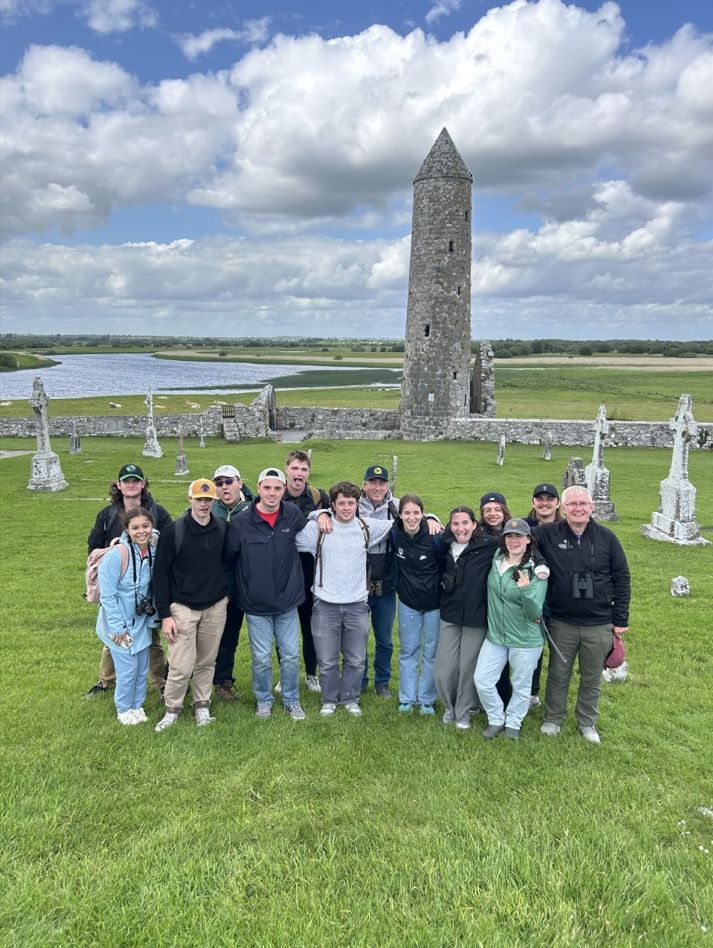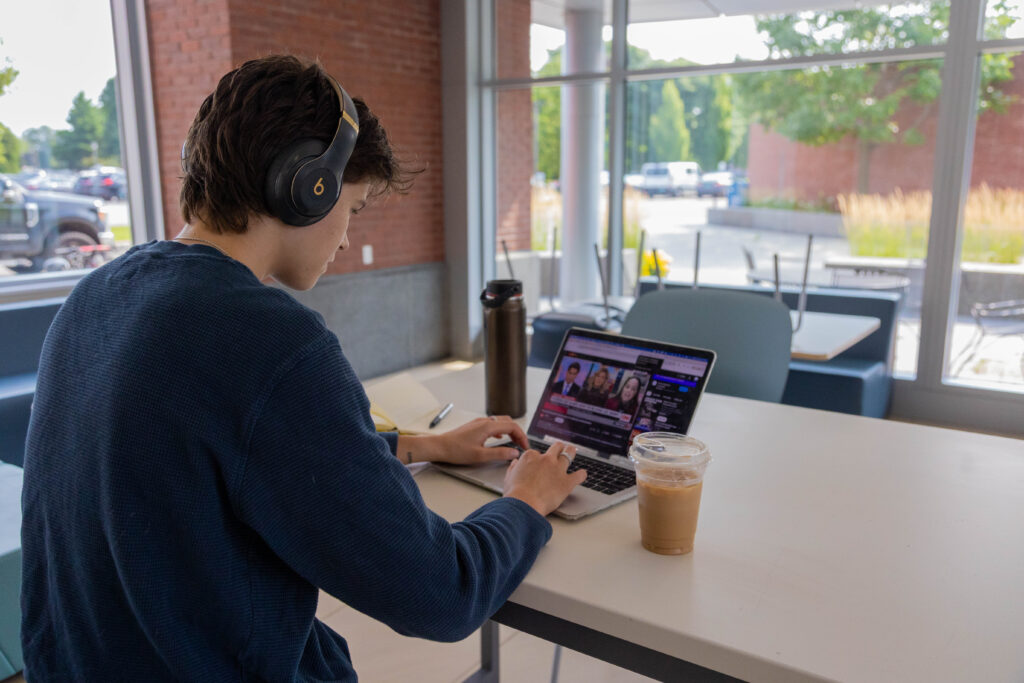Scholarship meets technology for summer ‘Hamilton’ screening
The College's new Media Creation Studio shows off what it can do in top-flight presentation of media

History Professor Alexandra Garrett previews Wednesday’s screening of Hamilton in the Media Creation Studio, offering historical context. (photos Patrick Bohan)
History scholarship, cutting-edge technology, and impromptu creative flexibility among faculty and staff merged for a well-received educational and entertaining summer event in the College’s new Media Creation Studio Wednesday afternoon.
A mid-day July 26 screening of the movie Hamilton featured interesting introductory historical context from both a professor and her summer research student, Emma Anderson ’25, along with an explanation from Studio Director Patrick Bohan about the studio’s vast capabilities that allow students and beyond to optimally experience media with a just-installed Dolby Atmos Digital Sound System and super-high resolution big-screen visuals.
Alexandra Garrett, early American specialist of the Saint Michael’s history faculty, shared how Wednesday’s event came about: “I’m teaching a new course this fall called Early American History on Screen, featuring movies and TV shows,” she said. “I reached out to Pat Bohan in the studio and asked about arranging screenings as homework for my students, and he said ‘yes.’”

Emma Anderson ’25 gives her preview of Hamilton based on a paper she wrote.
Shortly after, Bohan got back to her with an idea: He was hoping to do a “grand opening” for the Media Creation Studio, now that it recently has been “juiced up” this summer with the latest technology, which he was excited to try out and show off for an audience.
“He said, ‘everybody likes Hamilton, so why not show that?” said Garrett, who quickly thought of her research student Anderson, who had done a paper last semester (about Alexander Hamilton and his relationship with his wife, as portrayed in Hamilton) in another Garrett class, Gender and Power in Early America. Soon they had arranged for both professor and student to offer background before the screening.
Anderson’s summer research is not particularly related to Hamilton, however, said Garrett. Rather, Anderson is transcribing correspondence written in cursive of a court case touching on many key issues in history, as the case involves a woman property owner in the time of slavery. The letters are a key source for a book Garrett is working on and of special interest to Anderson, who aspires to attend law school, since the case relates to legal history. “She’s a history and equity studies double major,” the professor said.

The monitor in the St. Edmund’s hallway outside the Media Creation Studio notes intermission.
Garrett opened Wednesday’s program by telling an audience of about 10 faculty, staff, and Anderson in comfortable tiered seating arranged by Bohan about how Hamilton was important when it came out in 2015 since it got more students interested in history. “It energized the public to have a re-evaluation of the Founders’ time period,” she said. “So I talked about that and about historical accuracy, why it matters, and what are the stakes.”
For example, she said, the main characters of the play in history would surely have had enslaved servants with them at all times, but no such characters are in the story, although slavery is discussed. The play prompts people to think more and in different ways about issues like slavery, immigration, and women in the Founders’ period, beyond just normal history book fare, she said, which is positive.
She also mentioned how Hamilton came out during the hopeful Obama area with a Black man as president, inspiring creator Lin-Manuel Miranda to explore people of color reaching positions of power with the “statement” of casting people of color in lead roles. “His idea was, these are people not given power during the Founders’ era, so we’re going to give power back” in the play, she said.
After Garrett, Anderson talked about how her recent paper looked at Hamilton’s role with his wife – noting she was impressed by the basic historical accuracy that Miranda had researched to help audiences understand power dynamics in marriage relationships of the time.
Just before the movie started (the film is essentially the original cast performing the hit play), Bohan explained how the studio’s new Dolby Atmos Digital sound system allows each audience member, no matter where he or she is seated, to hear and feel the same amazing sound experience. Since Saint Michael’s students create media in their projects more and more, it’s important they be able to experience the best possibilities, he explained.
His words soon became reality as the movie began, as the sound was nearly other-worldly in its clarity and quality, vividly demonstrating as intended the possibilities to screen media for the coming year and beyond.
“To put it bluntly” Garrett summarized, “Pat just finished this amazing cinema studio and wanted a grand opening to show it off, so we said, let’s make it an educational event!”

Emma Anderson facing the audience for Hamilton.





